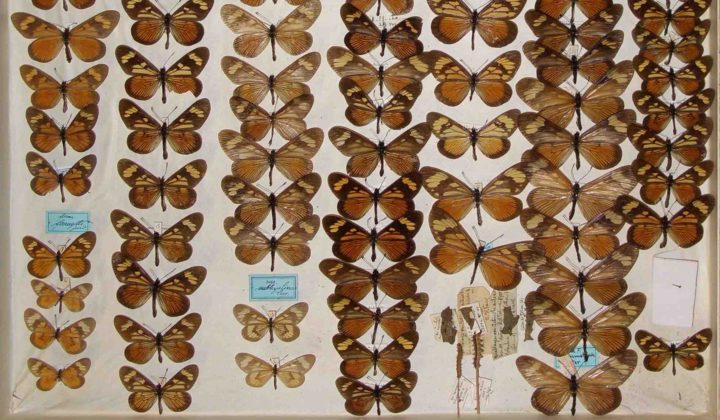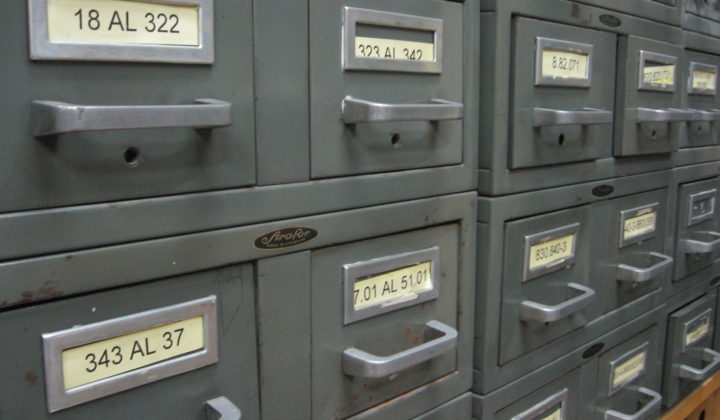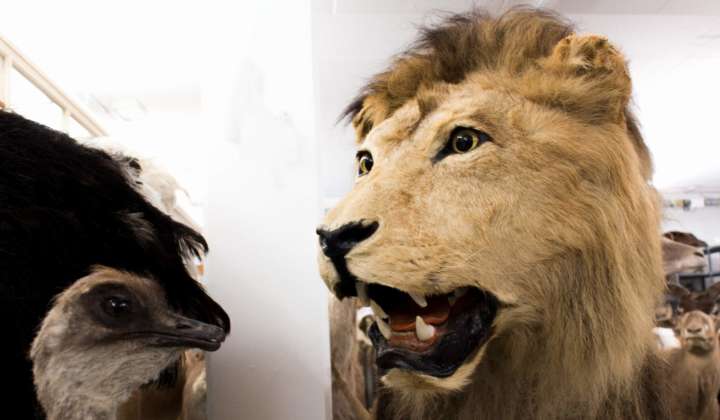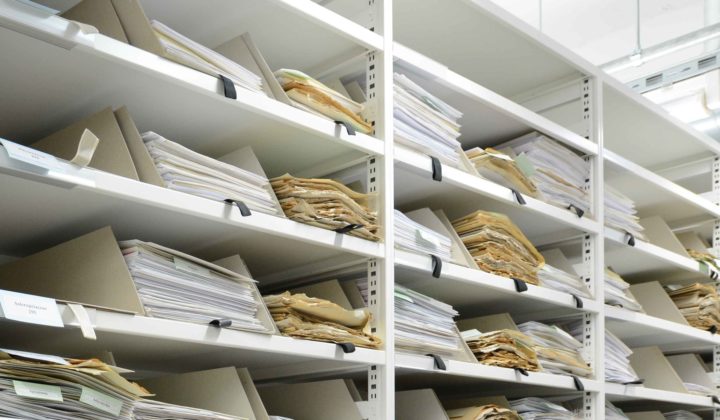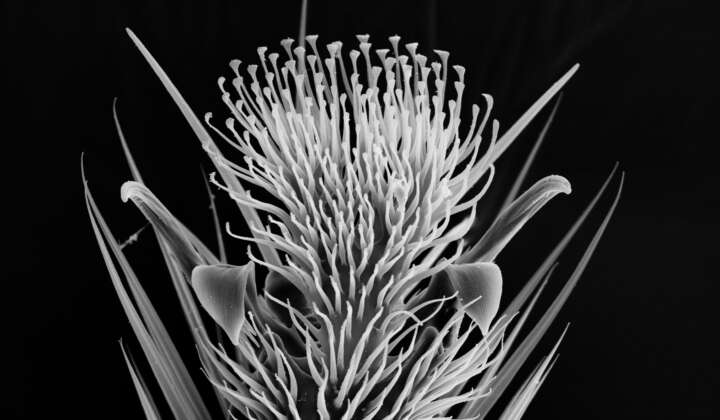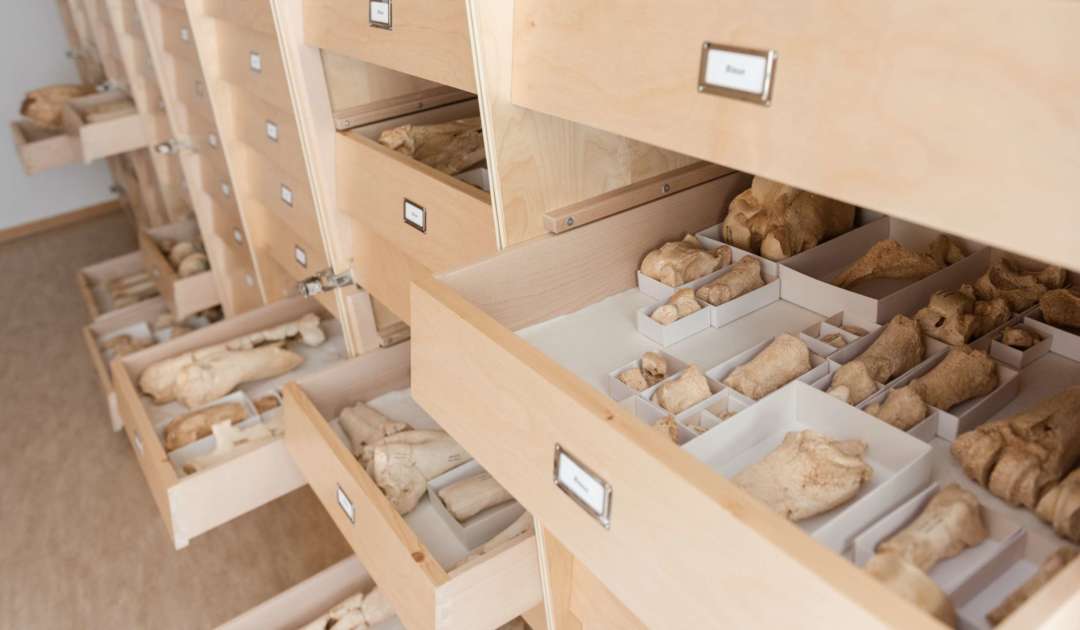
Collections in Frankfurt/M.
| Zoological Collections | Head of Section |
|---|---|
| Archnology | Dr. Peter Jäger |
| Crustacea | Prof. Dr. Angelika Brandt |
| Entomology I | Dr. Gunther Köhler (provisional) |
| Entomology II | Dr. Wolfgang Nässig |
| Entomology III | Prof. Dr. Steffen U. Pauls |
| Herpetology | Dr. Gunther Köhler |
| Ichtyology | Prof. Dr. Angelika Brandt (provisional) |
| River and Foodplain Ecology | Prof. Dr. Peter Haase |
| River Ecosystem Management | PD Fr. Andrea Sundermann |
| Marine Invertebrates I | PD Dr. Dorte Janussen |
| Marine Invertebrates II | Dr. Dieter Fiege |
| Marine Invertebrates III | Dr. Joachim Scholz |
| Malacology | Dr. Julia Sigwart |
| Mammalogy | Dr. Irina Ruf |
| Ornithology | Dr. Gerald Mayr |
| Botanical Collections | Head of Section |
|---|---|
| Phanerogams | Prof. Dr. Georg Zizka, Dr. Stefan Dressler |
| Cryptogams | Dr. Christian Printzen |
| Paleontological/Geological Collections | Head of Section |
|---|---|
| Palaeozoology I – Amber research Amber, Fossil insects and spiders |
Dr. Mónica Solórzano Kraemer |
| Historical Geology and Facies-Analysis Conodonts, Microfacies, Trilobites, Ediacara, Minerals |
Dr. Peter Königshof |
| Messel-Vertebrates | PD Dr. Krister T. Smith |
| Messel-Invertebrates | Dr. Sonja Wedmann |
| Meteorites Meteorites |
Dr. Jutta Zipfel |
| Micropalaeontology Ostracoda, Foraminifera and Radiolaria, Otoliths |
Dr. Volker Wilde |
| Palaeoanthropology | Prof. Dr. Friedemann Schrenk |
|
Palaeobotany Macro- and Microfossils all over earth history plant fossils, Eocene, Messel Nannoplankton |
Dr. Volker Wilde |
| Paleoherpetology Skeletons of lower vertebrates |
PD Dr. Krister T. Smith |
| Palynology and Palaeozoic Microvertebrates Palynomorphs, Trace Fossils |
Dr. Rainer Brocke |
| Fossil Vertebrates | Dr. Rainer Brocke |
| Fossil small mammals | Dr. Thomas Lehmann |
| Palaeoclimate- and Palaeoenvironmental Research Geoarchive Marburg |
apl. Prof. Dr. Dieter Uhl |
| Palaeozoology II Fossil Cnidaria and Echinodermata, Graptolithida, Stromatolithes, Tentaculitoidea |
Dr. Eberhard Schindler |
| Palaeozoology III Fossil Brachiopods, Fossil Mollusca, Hunsrück Slate Collection |
Dr. Ulrich Jansen |
| Quaternary Large Mammals (Senckenberg location Weimar) | Prof. Dr. Ralf-Dietrich Kahlke |
| Quaternary Small Mammals (Senckenberg location Weimar) | Dr. Lutz Christian Maul |
| Quaternary Macroflora (Senckenberg location Weimar) | Dr. Frank Kienast |
| Quaternary Microflora (Senckenberg location Weimar) | Dr. Martina Stebich |
Collections in Dresden
Geological-mineralogical Collections Dresden
The Museum of Mineralogy and Geology in Dresden is among the most significant museums in Germany with respect to research in the geosciences. The collections comprise about 400,000 minerals, fossils and stones. The fact that specimens in its collections were first mentioned in the year 1587 makes it the oldest geoscience institution in the world, and suggests an active developmental history. The collections include many type specimens (described for the first time) and originals (researched items) of fossils and minerals and stones.
| Geological-mineralogical Collections Dresden | Head of Section |
|---|---|
| Geochronology | Prof. Dr. Ulf Linnemann |
| Mineralogy | Prof. Dr. Klaus Thalheim |
| Petrography | Prof. Dr. Jan-Michael Lange |
| Palaeozoology | PD Dr. Markus Wilmsen |
| Palaeobotany | Dr. Lutz Kunzmann |
Zoological Collections Dresden
The Museum of Zoology in Dresden, with more than 6 million animal specimens, is one of the approximately 10 large zoological collections of Germany. The Dresden collections originate from all over the globe, and their international significance is due not least to the abundance of types represented. In the beetle collection alone (2 million specimens) are name-bearing type specimens housed for some 13,500 taxa (species and subspecies). Especially noteworthy are the rich holdings of exterminated vertebrates — among them, for example, a skeleton of the giant sea cow (Hydrodamalis gigas). Also outstanding are the collections of birds and weevils.
Among the ca. 91,000 specimens in the ornithological collection, about 60% of the world’s ca. 9000 bird species are represented. The weevil collection covers about 20,000 of the globally 65,000 species. In addition to classical zoological collections containing alcoholic specimens, skins, coats, and mounted specimens, an extensive and continually growing collection of tissue and blood samples for molecular-genetic studies is provided, currently with over 20,000 samples.
| Zoological Collections Dresden | Head of Section |
|---|---|
| Mammalogy | Dr. Clara Stefen |
| Ichthyology | Dr. Ralf Britz |
| Herpetology | Dr. Raffael Ernst |
| Ornithology | Dr. Martin Päckert |
| Malacology | Dr. Katrin Schniebs |
| Coleoptera | Dr. Klaus-Dieter Klass |
| Diptera | Dipl.-Ing. Uwe Kallweit |
| Lepidoptera | Dr. Matthias Nuss |
| Lower Evertebrates | Andreas Weck-Heimann |
| Hemiptera-Polyneoptera | Dr. Christian Schmidt |
Collections in Görlitz
The Museum of Natural History houses extensive scientific collections with a total of over 6 million objects from the fields of zoology, soil zoology, entomology, botany, paleontology and geology. These collections represent an archive of the animate and inanimate nature and document the development of organisms in space and time. They serve scientists worldwide e.g. for taxonomic-systematic, morphological and ecological studies.
| Soil Zoology Collections |
Head of Section |
|
|---|---|---|
| Flatworms | Plathelminthes | Prof. Dr. Willi Xylander |
| Mesofauna | Dr. David J. Russell | |
| Arachnids | Arachnida | Dr. Axel Christian |
| Nematodes | Nematoda | Dr. Karin Hohberg |
| Wingless Insects | Apterygota | Dr. Karin Hohberg (provisional) |
| Millipedes | Myriapoda | Dr. Karin Voigtländer |
| Oribatides mites | Oribatida | Dr. Ricarda Lehmitz |
| Zoological Collections | Head of Section | |
|---|---|---|
| Mammals | Mammalogy | Prof. Dr. Hermann Ansorge |
| Snails | Malacology | Dr. Heike Reise |
| Palaeozoology and Geology | Dr. Olaf Tietz | |
| Pterygota | Pterygota | Dr. Bernhard Seifert |
| Botanical Collections |
Head of Section |
|
|---|---|---|
| Vascular Plants I | Phanerogams I | PD Dr. Karsten Wesche |
| Vascular Plants II | Phanerogams II | Dr. Christiane Ritz |
| Funghi | Mycology | Dr. Ulrike Damm |
| Lichens | Lichenes | Dr. Volker Otte |
Collections in Müncheberg
The insect collection of the Senckenberg German Entomological Institute (SDEI) is one of the largest and most important natural history collections in Germany. The collection is a significant resource for the biodiversity research of the international scientific community.
At present it contains approximately 3 million specimens of about 190.000 species, including types of 22.000 species. The currently 13.000 drawers of the uniformly arranged, well catalogued collection are housed in climatised storagerooms in an electronically controlled system of compact shelving. Detailed data about the collection are publishes in Taeger et al. (2010).
Its foundation comprises the specialist collections of outstanding entomologists, which were mostly bequeathed to the SDEI. Amongst these are for example the collections of KRAATZ (Coleoptera), HORN (Coleoptera: Cicindelinae), LEONHARD (Coleoptera and Lepidoptera) and VON HEYDEN (Palaearctic Coleoptera). Particularly valuable are the collections made by SAUTER (1871-1948) in Formosa (about 6000 species, numerous types) and the 1961 DEI Expedition to Albania.
In general, insects of all orders and from every zoogeographic region are included in the collection. The main focus lies, however, on the orders Coleoptera, Diptera, Lepidoptera and Hymenoptera, which have traditionally been worked on by staff of the SDEI. Additionally material related to biology (larvae, pupae, mines, feeding traces, nests, etc.) is collected and preserved.
The individual parts of the collection, with few exceptions, are arranged in the main collection in drawers of standardised dimension and according to the principles expressed by Walther Horn. They are documented in catalogues or by inclusion in the SDEI database. The stock of type specimens is largely covered in published catalogues and partly already accessible via an internal SDEI database.
The rich type material commits the SDEI to intensive international exchange. Numerous guest researchers constantly visit the SDEI from all parts of the world in order to work in the collection.
Databasing insect type specimens collected in Taiwan and housed abroad
(External funder: National Museum of Natural Science (NMNS) in Taichung, Taiwan)
The collection of the SDEI is known for its large “Formosa Collection”, comprising about 6000 species and type material of 2258 species from Taiwan. The insects were collected between 1908 and 1914 by Hans Sauter (LINK: 1009683 ESAKI 1941.pdf) and donated to the institute, which engaged itself in finding specialists to examine the material, and in the publication of the results. Through this activity, Taiwan was for a long time the entomologically best investigated island in south-east Asia.
In 2007 the National Museum of Natural Science (NMNS) in Taichung, Taiwan, signed a contract with Senckenberg, which has led to the phased digitalisation of the type material in the Formosa Collection. The images have been made available by the NMNS in an online database Entomologists from all parts of the world are thus enabled to examine images of type material, often making it unnecessary to send specimens on loan.
Collections in Tübingen
At the Senckenberg Centre for Human Evolution and Palaeoenvironment (SHEP) at the University of Tübingen, nine collections are managed by Senckenberg. The six palaeontological collections have a history of more than 200 years and together comprise well over 1 million objects and more than 30,000 published individual items, mostly typological material. Fossils from the excavations of such important scientists as August von Quenstedt, Ernst Koken, Friedrich von Huene, Otto Schindewolf, Karl Mägdefrau, Alfred Eisenack or Adolf Seilacher can be examined. The collections also house central paleoanthropological fossils such as the bones of Danuvius guggenmosi (Madelaine Böhme) or the hominid teeth from the bean ore of the Swabian Alb (Wilhelm von Branco). In seven large exhibition halls, impressive vertebrate skeletons and other fossils, some in stratigraphic order and in a historicizing ambience, are presented in a long-established display, teaching and research collection.
The three collections of archaeobotany, archaeozoology and geoarchaeology developed from comparative research collections of the Tübingen Institute of Palaeontology, which has its origins in prehistoric studies.
In addition to the nine SHEP collections, there are also several working collections.
| Arbeitssammlungen | Ansprechpartner*in |
|---|---|
| Early Prehistory and Quaternary Ecology | Prof. Nicholas J. Conard, Ph.D. |
| Biogeology | Prof. Dr. Hervé Bocherens |
| Palaeoanthropology | Prof. Dr. Katerina Harvati |
| Vertebrate Embryology | PD Dr. Ingmar Werneburg |
| Comparative Zoology | Prof. Dr. Madelaine Böhme, PD Dr. Ingmar Werneburg |
| SHEP Collections | Head of Department/Head of Section |
|---|---|
| Systematic palaeontology of vertebrates | PD Dr. Ingmar Werneburg |
| Systematic palaeontology of invertebrates | PD Dr. Ingmar Werneburg |
| Stratigraphic palaeontology | PD Dr. Ingmar Werneburg |
| Collection of publications | PD Dr. Ingmar Werneburg |
| Micropalaeontology | PD Dr. Ingmar Werneburg |
| Palaeobotany | PD Dr. Ingmar Werneburg |
| Archaeobotany | PD Dr. Simone Riehl |
| Archaeozoology | PD Dr. Britt Starkovich |
| Geoarchaeology | Prof. Dr. Christopher Miller |
